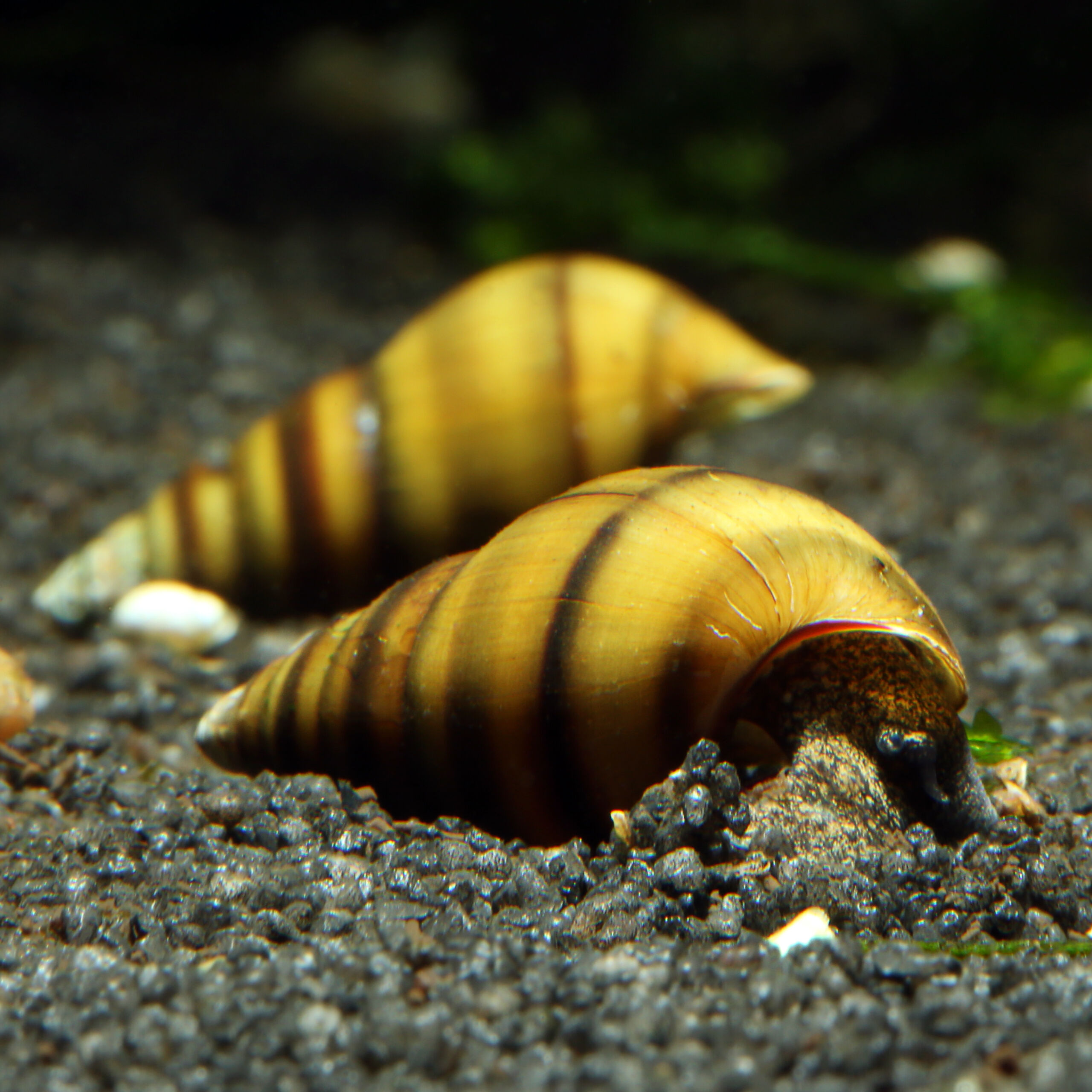Bee Snail
Brotia dautzenbergiana
The Bee Snail is not only pretty, but also a useful leftover recycler in the aquarium.
- pretty freshwater snail
- yellow-dark brown striped housing
- slow reproduction
1 in stock
 Delivery in a few working days
Delivery in a few working days
 Free shipping from €60 across Austria
Free shipping from €60 across Austria





Important data
Product description & details
Brotia dautzenbergiana, also known as the Bee Snail, is a freshwater snail that comes from Thailand in Southeast Asia and is found in oxygen-rich streams. It is characterized by its up to 4cm long, twisted and tapered shell with a yellow-dark brown striped pattern, which gives it a bee-like appearance and its name.
Care in the aquarium
The Bee Snail is easy to care for in the aquarium. Due to its size, it can be kept in aquariums from 30 liters. A soft substrate such as sand, soil or fine gravel is ideal, as the Bee Snail likes to dig in it. In contrast to trumpet snails of the genus Melanoides, the Bee Snail does not bury itself completely and remains visible in the aquarium. As with most species of snails, medium to hard water is ideal, as the shell can be damaged if the water is too soft. This snail species is extremely peaceful and can easily be socialized with fish and invertebrates that require similar water parameters and do not prey on it.
Feeding
Brotia dautzenbergiana is an omnivore, i.e. feeds on both plant and meaty food. It actively searches the substrate in particular for food particles, but algae are also on its menu. Healthy plants, on the other hand, are left alone by the Bee Snail. Various types of snail and shrimp food, spirulina and chlorella as well as brown leaves are ideal for varied supplementary feeding.
Sexual characteristics and breeding
The Bee Snail has separate sexes, but the differences cannot be detected from the outside. If both sexes are present, this viviparous snail species can usually be bred without much effort. However, since the reproduction rate is very low and only a few young animals are released every few months, you don’t have to worry about overpopulation.





